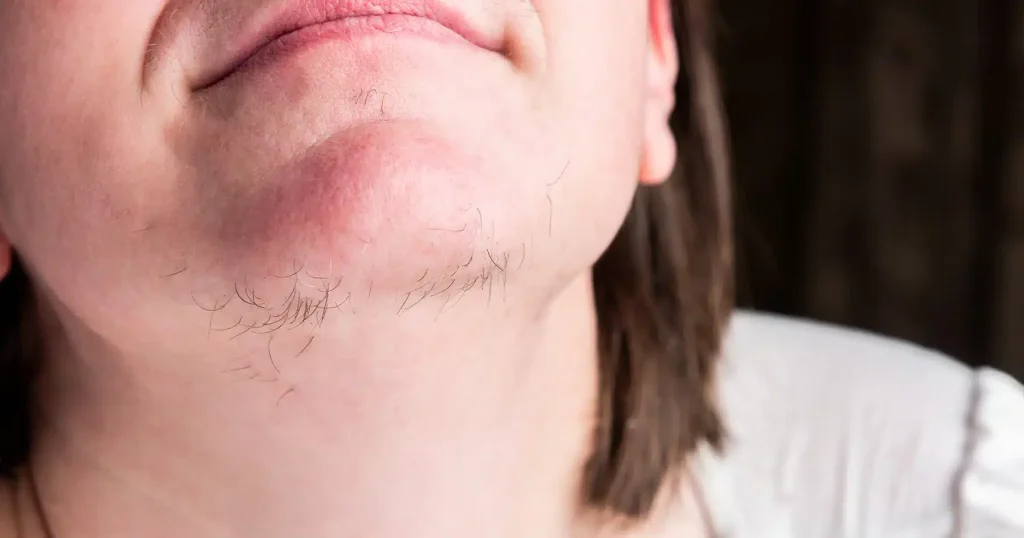In specific instances, women may experience hair growth in areas typically populated by substantial male hair, such as the chin, chest, back, and upper lip. If you’re noticing excessive facial or body hair in these areas, you might be dealing with a condition known as Hirsutism.
Hirsutism in women is primarily driven by an excess of androgens, a category of male hormones naturally present in low quantities in females. Elevated androgen levels can trigger the unusual hair growth associated with Hirsutism.
But don’t worry! There are numerous self-care treatments and effective medical options available for women experiencing this condition. Continue reading to learn more about Hirsutism and how to manage it.
What Causes Hirsutism?
Genetics can be a significant factor in the development of Hirsutism. If it runs in your family, you may be more prone to it. However, genetics isn’t the only cause – there are several other factors that contribute to excess hair growth.
Here are additional causes of Hirsutism in women:
- Polycystic Ovary Syndrome (PCOS)
- Disorders of the pituitary, adrenal, or thyroid glands
- An ovarian tumor that escalates androgen production
- Severe insulin resistance
- Hormonal changes post-menopause
- Use of anabolic steroids or corticosteroids
- Medications for endometriosis
- Other specific drugs
Note: Sometimes, the cause remains unidentified. In such instances, it is termed Idiopathic Hirsutism.
Symptoms of Hirsutism
When Hirsutism is due to high androgen levels, other symptoms of virilization may develop over time. You may observe:
- Deepening of the voice
- Balding
- Acne
- Reduction in breast size
- Increased muscle mass
- Enlargement of the clitoris
Who is Susceptible to Hirsutism?
The following groups are more likely to experience Hirsutism:
- Individuals diagnosed with PCOS
- Family members with excessive hair growth
- People with disorders of the pituitary, adrenal, or thyroid glands
- Individuals with diabetes suffering from insulin resistance
- Women undergoing hormonal changes due to menopause
How Can Hirsutism be Treated?
Treatment varies according to personal preference. Each person has different levels of comfort regarding hair removal or reduction.
Effective methods for managing unwanted hair in Hirsutism include:
Shaving: This should be done as the hair starts to grow back.
Depilatory lotion: These lotions use chemicals on the skin, rendering the hair soft enough to be wiped away.
Waxing: Both hot and cold wax can remove hair at the root, with the process needing to be repeated every two to three weeks.
Bleaching: Chemicals are applied to lighten the hair, making it less visible.
Electrolysis: This method involves a fine, electrically-charged needle inserted into the hair follicle, which damages it and prevents future growth. Multiple sessions are necessary for lasting results.
Laser hair removal: The laser targets the pigment in the hair, destroying it. Several sessions are needed for effective results.
Skin creams: Topical creams containing eflornithine can slow hair growth, showing results after 6 to 8 weeks.
With Bridge Health, taking control of Hirsutism is within reach through proper self-care and medical treatments. Explore these options to find the best approach for you.
